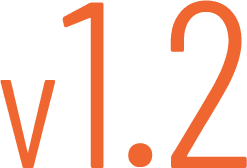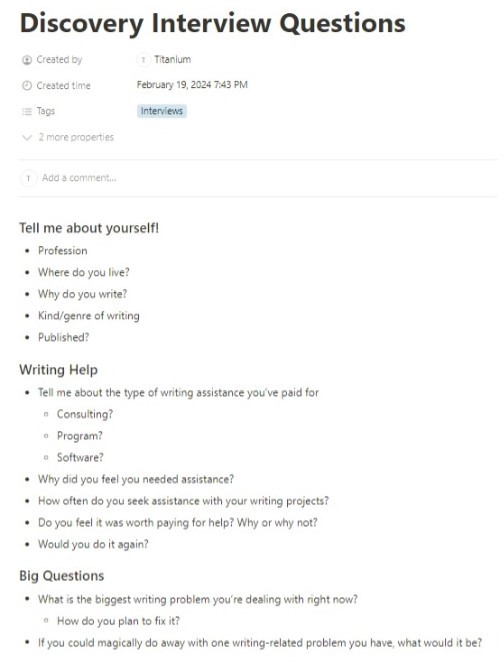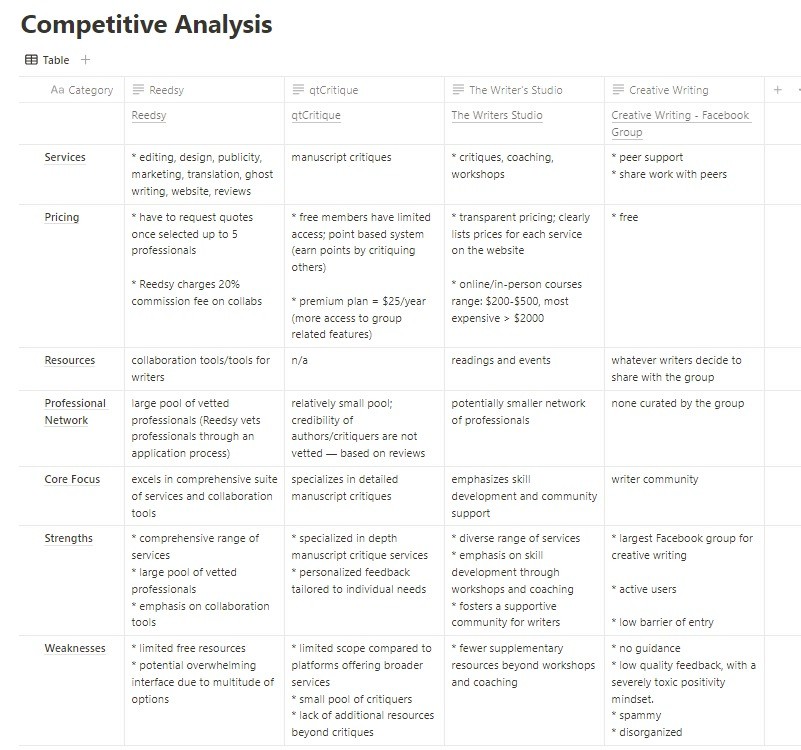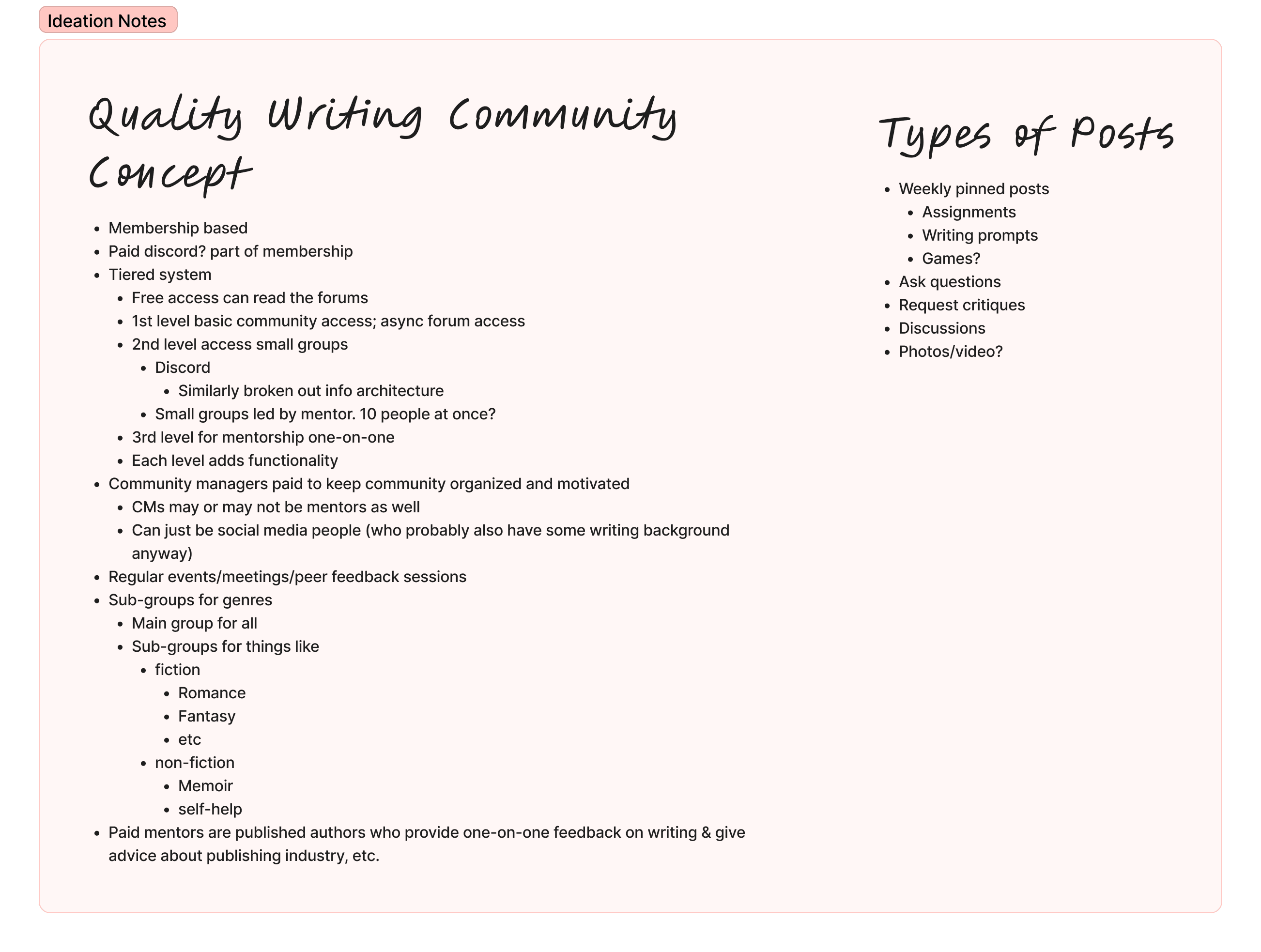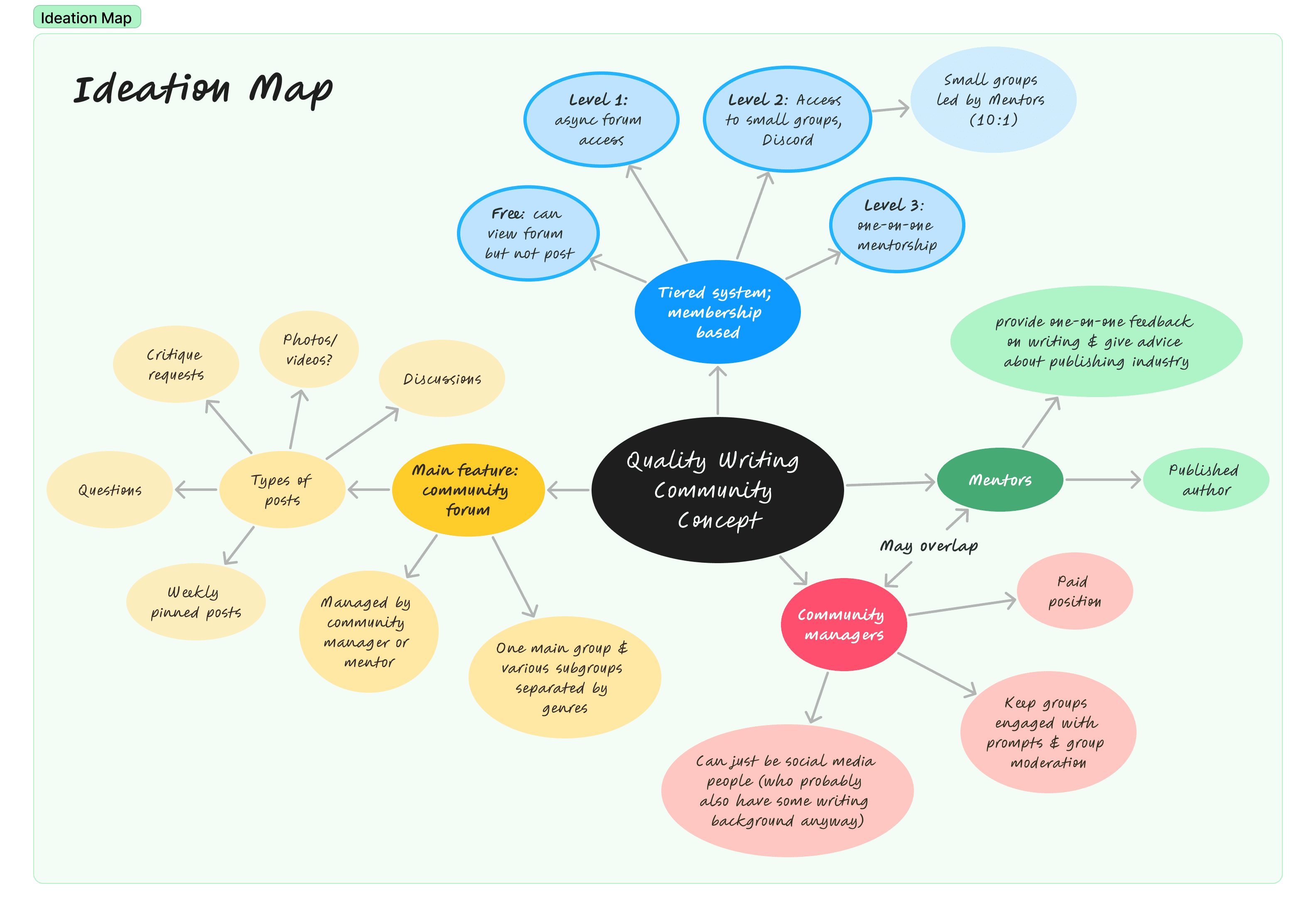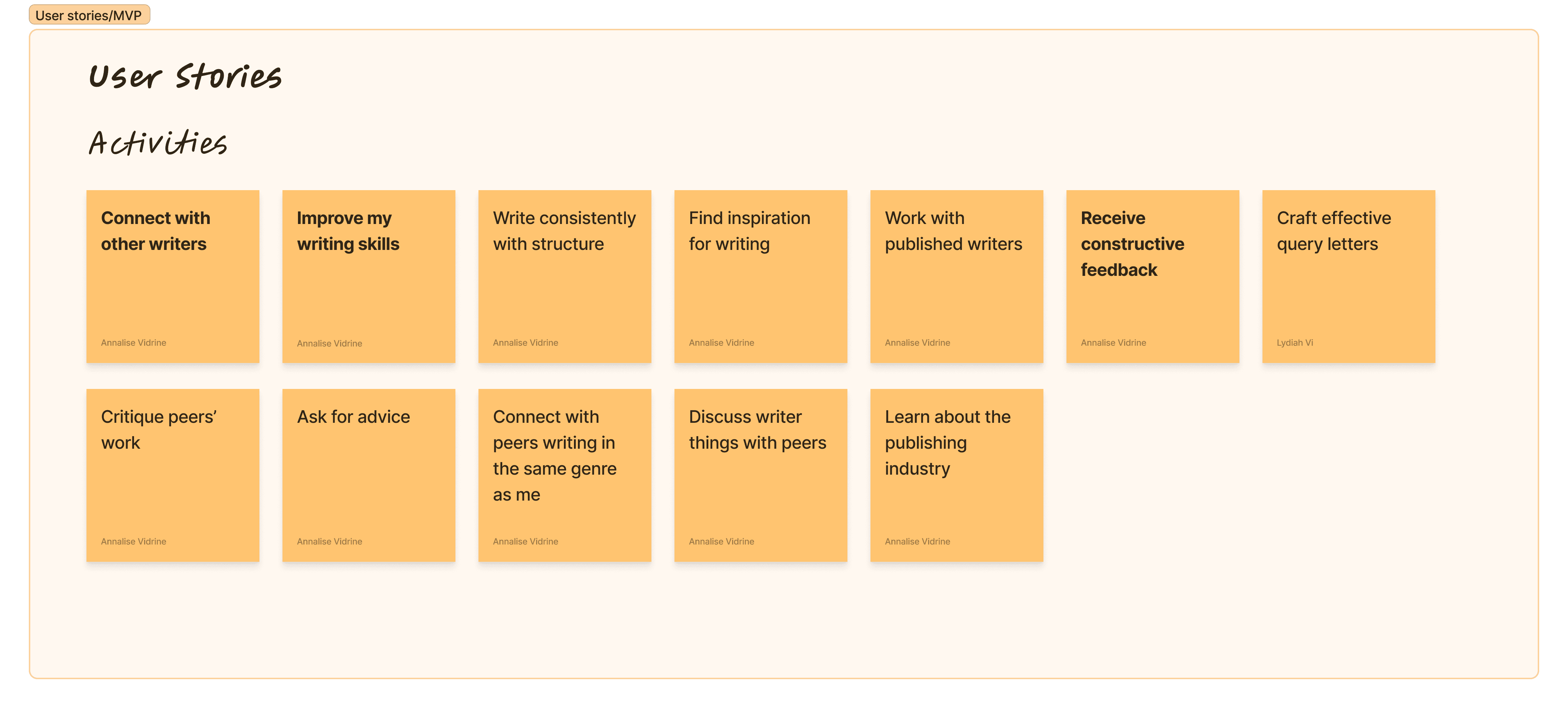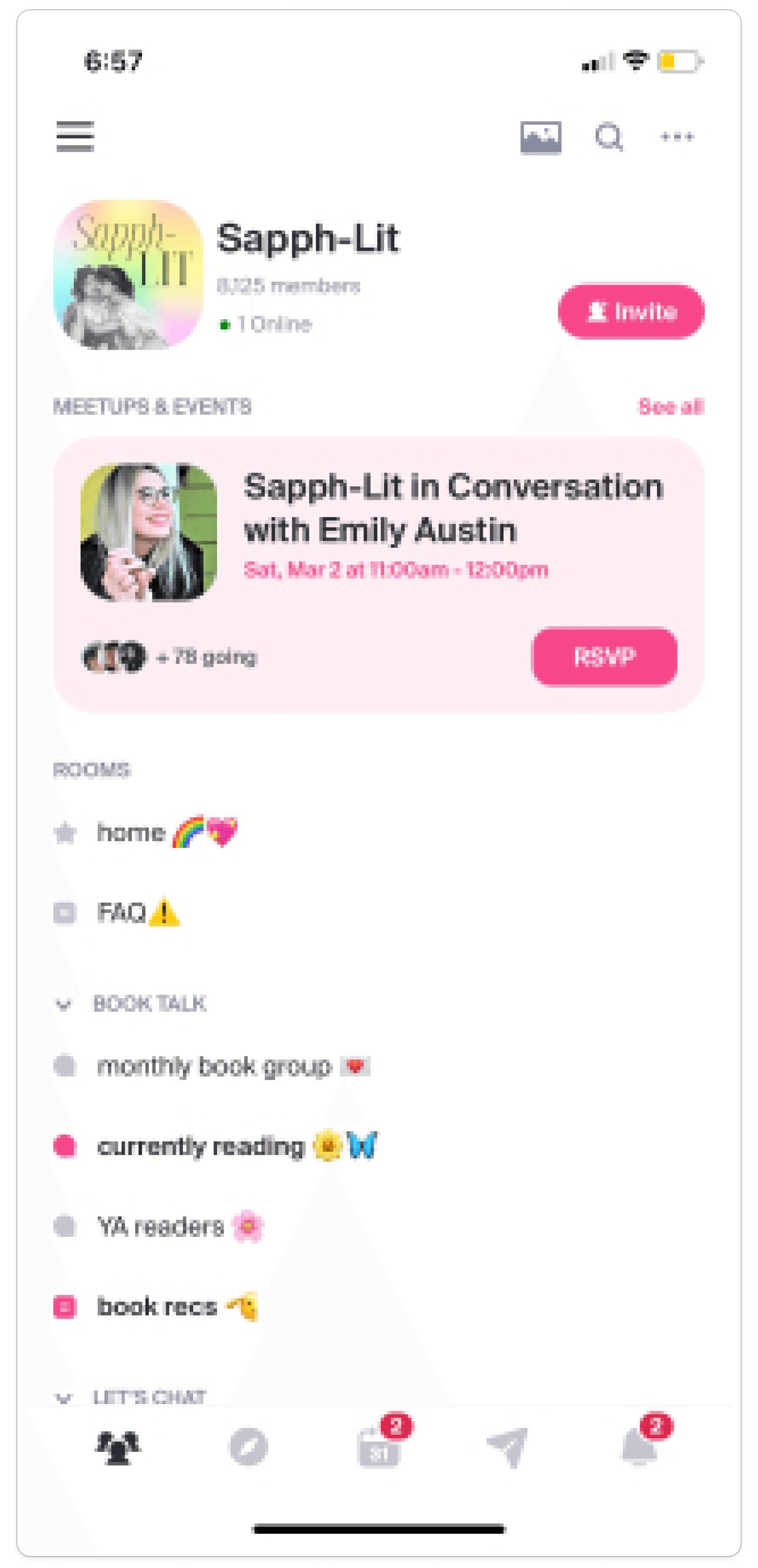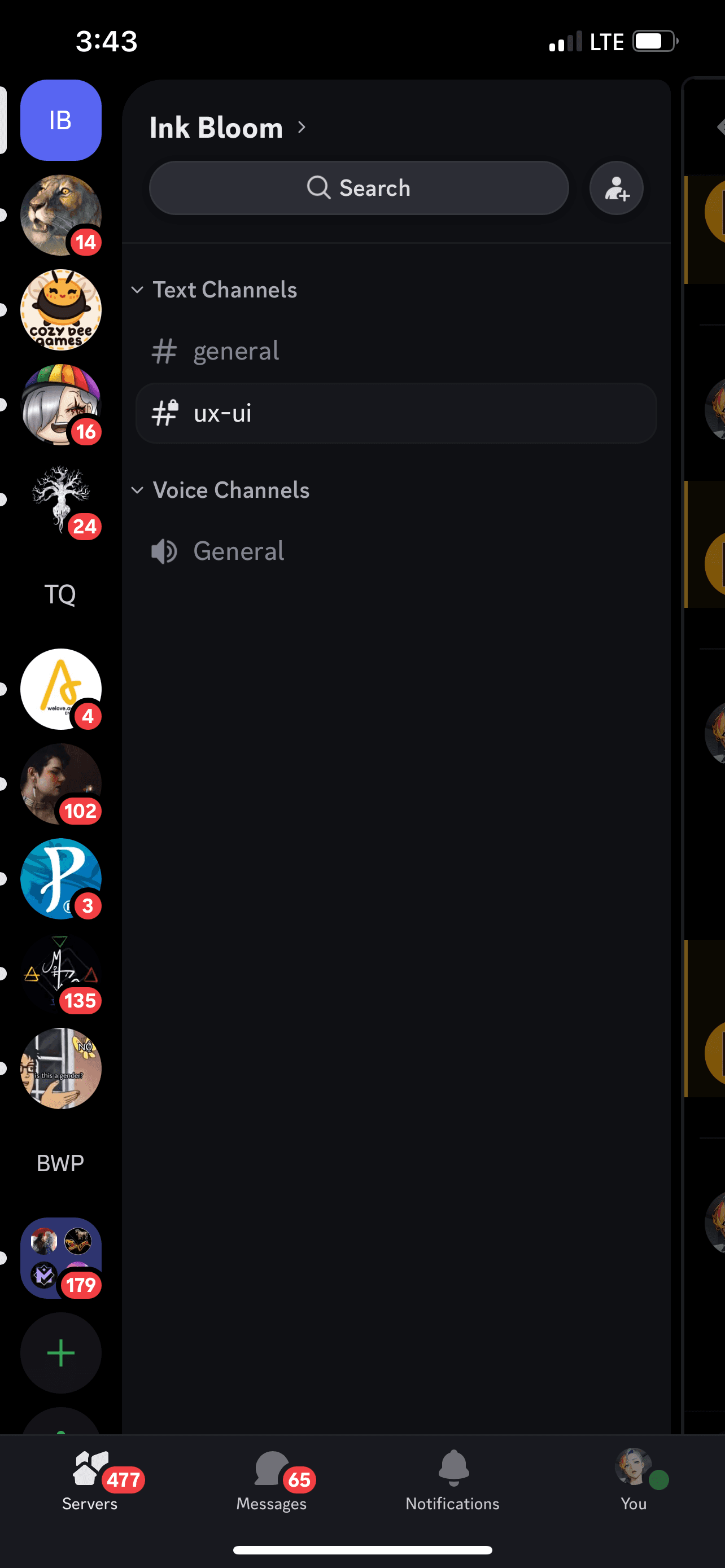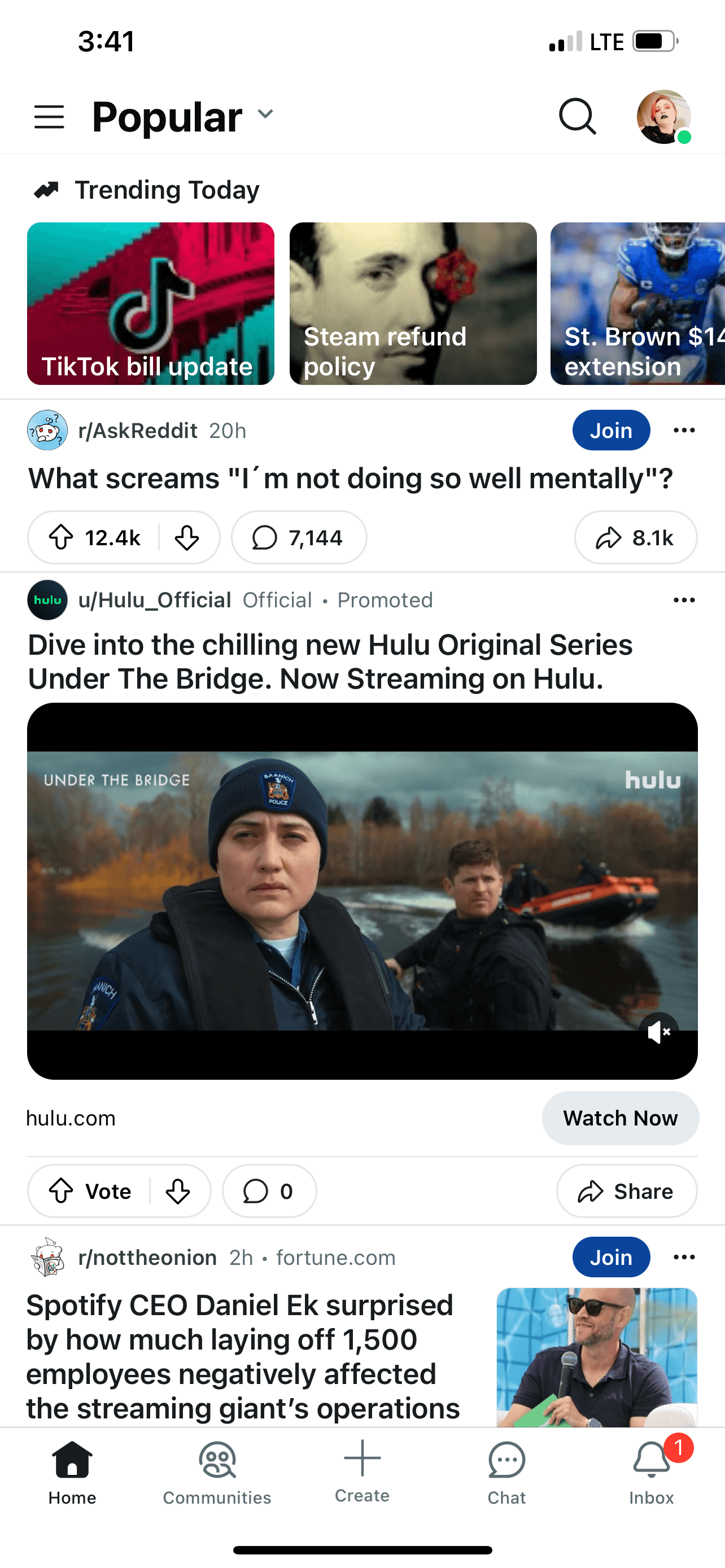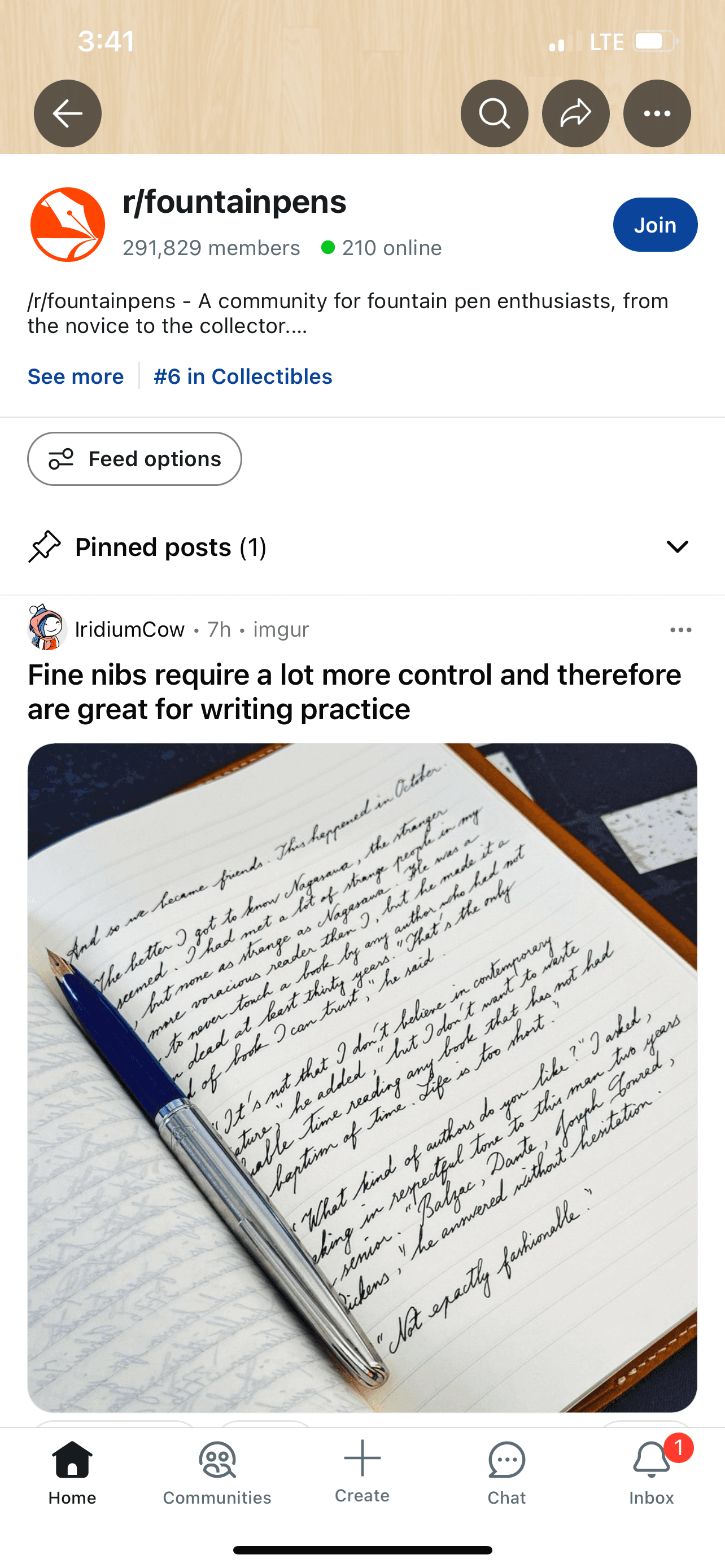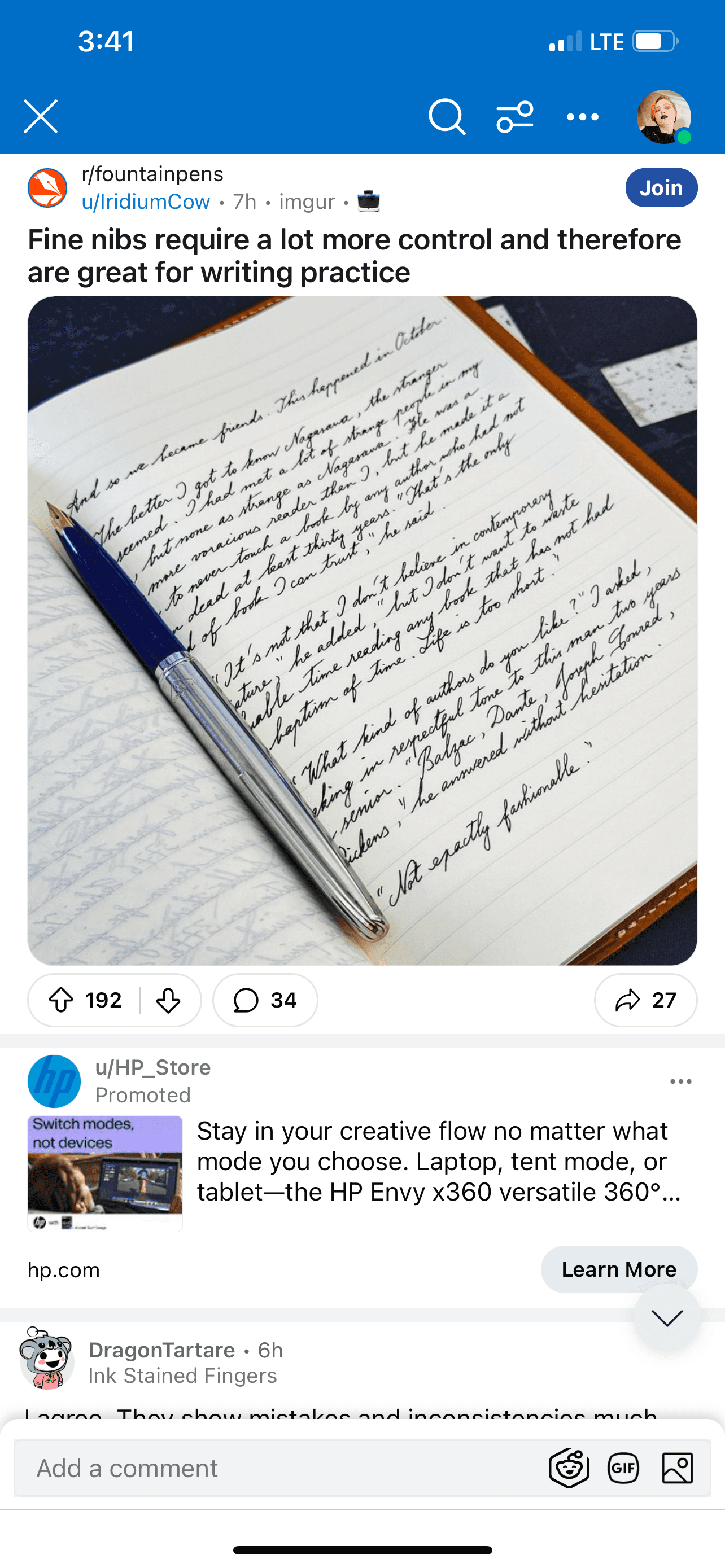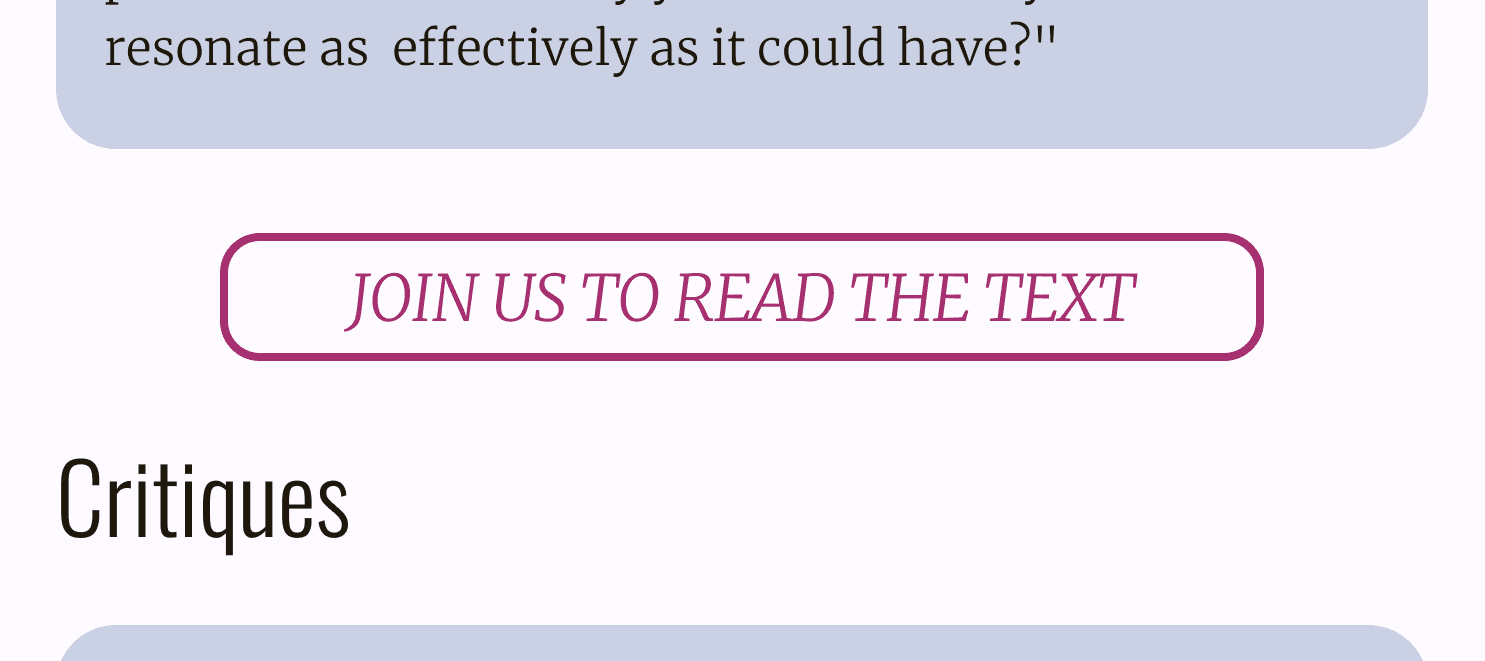Social Media
Ink Bloom
Writing Community
Ink Bloom began the project as an extremely early stage startup concept. Founder Dr. Ray Hsu envisioned it as a project to solve writers' biggest problem, with an original hypothesis that connecting writers to writing mentors would be the solution to the currently undefined problem.
The first step was to identify the actual biggest problem writers are facing, then ideate solutions based on that. Dr. Ray instructed us to treat the hypothesis as just that: A hypothesis to be tested, not a fact to run with and assume as the correct solution.
I stepped in as team lead and primary UX researcher for our small team of 3 designers as we geared up for a 4 week sprint. Our plan was to-
Research
Ideate
Build
Test
Iterate
- a solution for a problem we had not yet identified. This was shaping up to be a true adventure!
Nailing the Problem
Dr. Ray provided us with 5 interviewees to start. With a big, broad question such as “the biggest problem writers face”, there was very little known about the target audience contained in that beyond “writers”. However, since we want to build a business around solving a problem, I identified the right interviewees to be “Writers who have spent money to solve their writing problem”.
Dr. Ray’s initial 5 had not spent any money to solve writing problems. My hypothesis was that this meant they would be unlikely to invest in whatever Ink Bloom shaped up to be, making them not our target audience.
With this in mind, I wrote up a survey for Dr. Ray to send to their broad network of writing contacts, allowing me to sift through and identify the ones who best matched the target audience. Afterwards I scheduled discovery calls over Zoom.
5 calls later I had everything I needed to put together a powerful research summary. What surprised me the most about these calls was how similar the writer’s experiences were. I myself have been a writer for 25+ years, and spent 15 of those years as a freelance writer. So I know a thing or two about the writing world and writers. Even so, approaching the interviews as a UX researcher rather than a writer still helped me uncover insights about my community that I had never realized before.
We ended up with:
The Top 3 Problems Writers Face
1:
Getting their book published
2:
Getting constructive criticism that will actually help them get published
3:
Finding and maintaining a community that truly and consistently supports them
Ideating the Solution
My team crafted a beautiful user persona that captured the essence of our interviewees.
“I love writing, but wonder if I’m any good. It’s hard to find honest feedback, and I often feel isolated. Writing my novel is my dream, but the publishing world feels like a maze. I wish I could find a supportive community of writers who understand my struggles and can help me grow as a writer.”
User Story
Samantha is a passionate educator who has been teaching elementary school for over 15 years. She enjoys writing fiction in her spare time as a creative outlet and a way to express her thoughts and experiences. She has been doing so for several years with a determination to see her novel published.
Goals
Get Published: Samantha’s primary ambition is to secure a publishing deal for her writing. While she cherishes writing as a creative outlet, she’s determined to see her work reach a broader audience.
Refining Writing Craft Through Feedback: Samantha is dedicated to enhancing her writing skills across various genres, using it for self-expression. She seeks constructive feedback to refine her storytelling techniques and identify areas for improvement in order to gain confidence in her work.
Connect with Like-Minded Writers: Samantha seeks to connect with other hobbyist writers who share her passion for writing. She wants to be part of a supportive writing community where she can exchange ideas, receive encouragement, and share her writing journey with others.
Pain Points
Navigating Traditional Publishing: Samantha struggles with navigating the traditional publishing industry, including finding a literary agent and crafting effective query letters. She also desires constructive criticism to polish her manuscript for submission.
Limited Feedback Channels: Samantha struggles to find reliable sources of feedback on her writing. She often relies on family and friends for feedback, but their responses are often vague or overly positive, leaving her uncertain about the quality of her writing.
Lack of Networking Opportunities: Samantha lacks opportunities to connect with other writers and expand her writing network. She feels isolated in her writing journey and wishes to find a supportive community where she can share her work, receive feedback, and learn from others.
Then we put together market research via insights from our discovery interviews and popular writer meeting places.
Once this info was gathered, we put our heads together on a Zoom call and began ideating furiously. Scribbling notes and diagrams down on a shared FigJam board as we tossed ideas back and forth.
The 3 big problems our target audience face are big and complex. But we identified one common denominator that, if resolved, could blast the dams holding our target audience back:
Community.
More specifically, the lack of a good community. Finding a lackluster community is easy. But a trustworthy, dedicated, supportive community? Not so much.
Once we had this insight, the rest of the solution came tumbling out.
A social media webapp focusing on building and maintaining a high quality community of writers.
Keeping in mind the minimum viable product will be simplistic, we created room for future expansions that could include workshops, online courses and/or an expert marketplace.
Designing the Solution
As powerful a connector and community builder as it is, social media is notoriously built for short attention spans. So what sort of social media platform can encourage and sustain lengthy conversations such as writers love to have?
A forum. Old fashioned though they are, the format is powerful and an old favorite in the writing community. For inspo, we looked at Reddit, Discord and a few other modern but clean apps fostering in-depth conversations.
inspo
Overall format decided. Alright. Next problem: How do we design something that ensures a high quality community?
We aimed for this in several key ways:
Paid community, with no interaction from anyone who had not committed funds
Managed community, with employees facilitating regular activities such as writing prompt and challenge threads
Onboarding process to ensure users gave the right kind of information at the right time, to maximize engagement right from the start
Easy ways to share writing and get feedback from peers, to encourage regular participation
First Prototype Tests
Team member Lydiah whipped our sketches into beautifully prototyped wireframes at a nigh alarming speed. Seeing her work taught me a humbling amount about Figma’s prototyping capabilities. I thought I was pretty good at it before, but I’m excited to flex my new knowledge in my next project.
Then it was off to test our prototypes with real, live people. Back when I interviewed our original 5, I asked if they would be willing to test our prototype. All 5 said yes. The dates had already been set and we simply raced to have the prototypes ready in time. Which we did.
Results of First Tests
Users moved through the screens with only a few minor hesitations as far as layout and directions. Notably, the questions asked in the onboarding process gave users pause. Not because the questions were unreasonable, but rather because they felt jarring to answer in their current mindset.
I’m currently thinking about getting critique of my own work done. What do you mean ‘what am I looking for’? I’m looking for critique!
“
”
*cough* I mean, when you put it that way…
Their biggest sticking point actually surprised me.
Users wanted to see the text from the start so they could judge the quality of critiques for themselves. But at the SAME TIME, users did not want strangers to read their own writing.
I think we’re all a little afraid of our work being stolen. But besides that, I also only want people I trust to see my baby. Writing is vulnerable, after all.
“
”
The thing our users loved most was the critique text pop-up. It’s amusing to me how powerful this one element was to folk. They needed to see it before they felt they could commit. And once they committed, their eyes lit up. This is where they began to say “Oh wow, that’s really cool!”.
Our users also began asking about future functionality. They wanted to leave critiques on a line-by-line basis, sort of like Google doc or Medium comments. They also mentioned a strong preference towards posting their requests for critique from their computers, while still being interested in reading threads and possibly leaving critiques on their phones.
Iterations
We had a list of small tweaks to make, but there was one major problem we had to solve:
How can we allow prospective users to see the text being critiqued while still keeping it away from prying, stranger’s eyes?
An inherently contradictory place to be.
We decided to allow a free account after all. But the account would only allow folk to read the text for critiques and thumbs up posts/critiques they agree with. No other interactions allowed. This way we could track who reads what, as well as ensure anyone who reads the posts is a human with a real and genuine interest in the work. No bots, no randos, no secret peeks.
With this one change we now had to rework a variety of points.
The onboarding needed two stages, rather than just one.
The critique page needed 3 states:
Not logged in
Free User
Paid User
Our secondary focus was on creating a cleaner, line-by-line critiquing functionality that works well on mobile.
Second Prototype Tests
Due to the speed of the project, we utilized the same interviewees for the second tests as we did the first. Ideally I’d have liked to have new ones, but it was interesting to see folks’ reaction to the new updates when they had also seen the old version.
New Critique Page
The new critiquing page was a smash hit in concept, but too subtle in practice. They did not notice the critiquing functionality, nor the comment button at the top. This might have been due to the limitations of the prototype, but I think it was also not quite optimized for mobile. We had made this in mobile format, but the highlighting was designed to pop up with a hover. It could work on mobile, but hovering is more for a desktop.
To have a free user, or not to have a free user?
The big problem was a bit trickier. Approaching as a reader, users were comfortable signing up with their email to read someone’s work. But as writers, they hesitated over the idea of someone silently reading their work, even if they weren’t anonymous readers.
The cognitive dissonance is real
Again some of the questions in the onboarding still felt strange to users, but the overall push towards onboarding in stages was a comfortable breakdown of the process.
Wrapping Up and Final Deliverables
Ink Bloom aims to continue moving forward with the project. So a big part of our wrap up was documenting our work and making sure all our notes were in order.
Based on the results of our final test, I wrote up some recommendations for what to do next in the iteration process.
For now, continue with the free user concept. It’s a tricky issue no matter what you do, and this has had the most promising result so far. Further data gathering is warranted.
A fair number of specific tweaks to onboarding questions and behavior, trying to smooth out the process. The less friction, the more sign-ups after all.
Design adjustments to the critique page and the way critique comments work and look to readers.
Then we gathered all our deliverables:
All the Figma files
Notion workspace
And transferred their ownership to the client.
Conclusion
Dr. Ray was delighted by the data we gathered and the product we crafted for Ink Bloom.
The folk we interviewed each expressed interest in the project and hoped it would make it to completion. They felt it met their current needs beautifully, as well as hinted at future features that met even more of their needs.
Collaborating with Titanium Syn on the development of Ink Bloom has been nothing short of incredible: their expertise in UX/UI design and research has been instrumental in shaping our project--to say nothing of their dedication, professionalism, and attention to detail, which have exceeded our expectations.
I highly recommend Titanium to anyone seeking a reliable partner in the design and development space. Thank you, Titanium, for your invaluable contribution to our project's success!
Dr. Ray Hsu
Senior Product Manager and Founder, Ink Bloom


